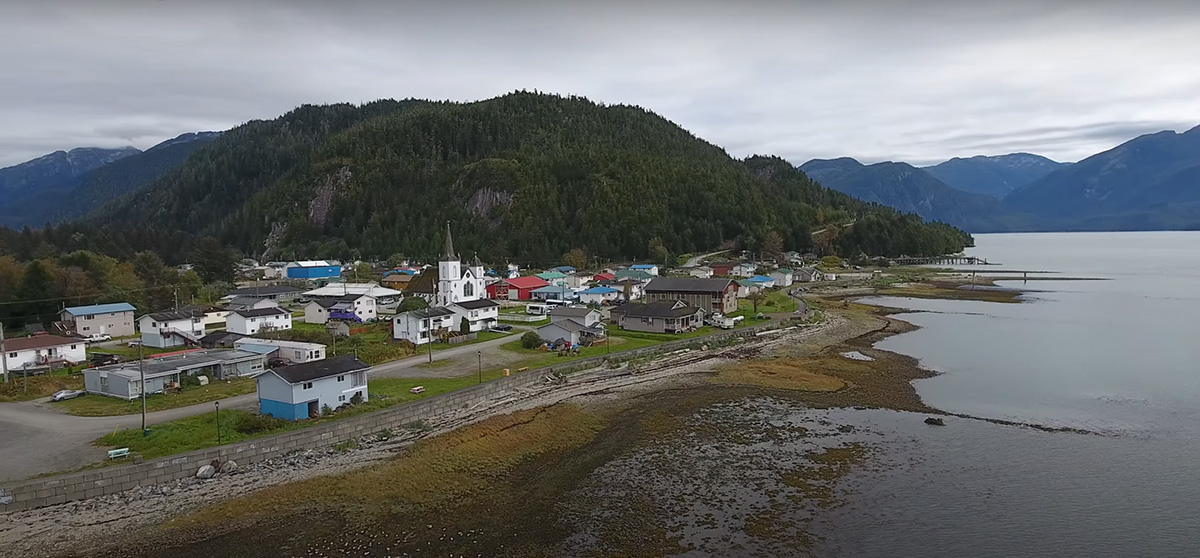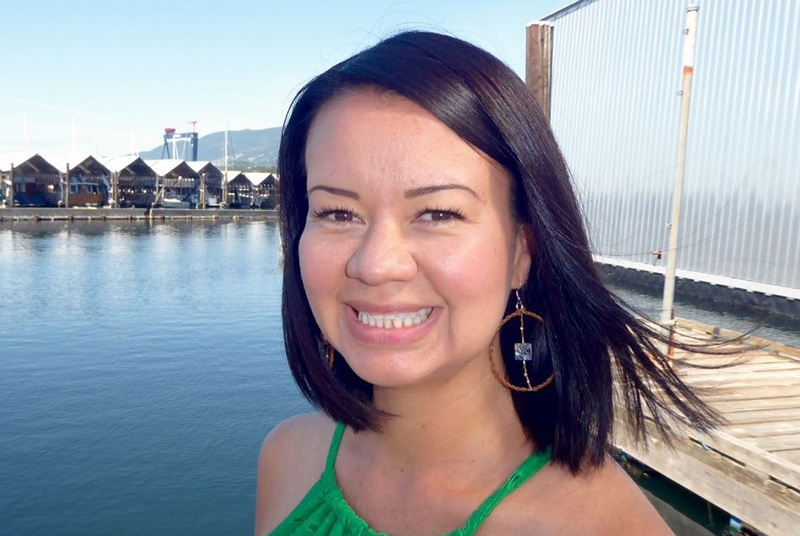Expectations of an LNG export boom in British Columbia have faded as low prices and the provincial government’s greenhouse emission targets have created barriers for any new projects.
And yet the provincial government is continuing to quietly negotiate a potential land sale in the province’s northwest to the Nisga’a Nation, which has previously expressed interest in using the property to develop a liquified natural gas export facility or other infrastructure.
“The Province is currently in talks with the Nisga’a Nation about a potential Crown land sale in Nasoga Gulf,” the Ministry of Indigenous Relations and Reconciliation confirmed in an emailed statement in late November.
“It’s important to note that no agreement regarding any land sale would be signed without full consultation with neighbouring First Nations,” it said. “The province currently is engaged in consultations with Lax Kw’alaams Band and Metlakatla First Nation on the proposed transaction, as is Nisga’a Nation.”
Representatives of the Nisga’a Lisims Government, including recently re-elected President Eva Clayton, were unavailable for an interview.
Negotiations over transfer of the Nasoga Gulf lands date back to at least 2016, when the Nisga’a Nation announced it hoped to buy some 220 square kilometres from the province and enter a long-term lease for the foreshore and lands under the gulf. The transfer would add to the nation’s 2,000-square-kilometre territory about 120 kilometres northeast of Prince Rupert.
The Nine Tribes of the Coast Tsimshian — which includes Lax Kw'alaams and Metlakatla — went public with their opposition to the sale in June 2019. They said the lands were in their traditional territory and that their law, history and oral history traditions indicated they held Aboriginal title to them.
Clayton argued then that the other nation’s rights, if they were established, would be fully protected and that the purchase was part of the Nisga’a Nation’s commitment to become economically self-sufficient.
“The land we are purchasing could be strategic to future development,” she wrote.
When the Nisga’a Nation began considering the purchase there were about 20 LNG facilities proposed throughout the province, almost all of which have since stalled or been abandoned.
Prince Rupert Gas Transmission Ltd., a TC Energy company, planned to build a pipeline that would have passed through the Nass Valley and the Nisga’a lands to serve one of them, the Pacific NorthWest LNG plant near Port Edward.
The Nisga’a agreement with the pipeline company gave the nation a right to some of the pipeline’s capacity and it hoped to use that access to attract an LNG developer.
“Since [October 2014] the Nisga’a Nation has been actively pursuing opportunities for LNG development in the vicinity of Nasoga Gulf,” the 2016 notice said. “Although no project is proposed for this location at this time, the area may eventually be developed and may include LNG or other infrastructure development.”
“Nisga’a citizens will, of course, be informed as these opportunities progress,” it added.
Four years later the land sale is quietly progressing. But there’s little information about what exactly may be planned for the property.
The Pacific NorthWest LNG proponents decided in 2017 not to proceed with the project, but TC Energy’s website still says it is reviewing its options for the pipeline.

Ginger Gosnell-Myers, a Nisga’a citizen, said there is little information on the nation’s plans.
“I think it’s fair to say there’s no clarity on what the plans are and who is involved,” she said. “I think there are a lot of questions, not a lot of answers.”
Gosnell-Myers had been asking questions herself, but stopped when she realized the nation forwarded every email to lawyers to respond. “That’s a big waste of money,” she said, adding that it’s also difficult for the Nisga’a to develop a good governance system when lawyers are still in control.
And in the absence of answers, Nisga’a citizens are in the dark about what their leadership is doing, she said, which is part of a longer term pattern.
“It’s very confusing. We don’t always understand what’s happening until there’s a signing agreement about to be announced.”
The sale of the Nasoga land to the Nisga’a Nation has been contested by Lax Kw’alaams and Metlakatla leaders.
But the Nisga’a Nation has also formed the First Nations Climate Initiative, which supports using LNG from B.C. to displace coal in Japan and China, an alliance that includes those same Kw’alaams and Metlakatla leaders.
Gosnell-Myers said it’s hard to sort out the conflict over the land sale. Just as it’s hard to understand how the Nisga’a Nation can partner with its neighbours at the same time as addressing a challenge from them.
All the nations need to do a better job engaging their members, she said.
For the Nisga’a Nation, there also needs to be more discussion of what kind of economic development citizens want, she said.
“The Nisaga’a Nation is trying really hard to create an economic base for its residents in its core lands,” she said. But instead of establishing its own vision, the government seems to be waiting for investors to show up with proposals. “They seem to be obsessed with who is knocking on their doors.”
The result is there’s little discussion of alternatives to the pipeline economy, she added, even though the Nisga’a people are incredibly connected to the land and water — reliant on fish, animals and vegetation for both sustenance and ceremonies — and would like a greater focus on opportunities that involve those traditional resources.
Nor is it clear what the provincial government has in mind.
For at least the last two years Premier John Horgan has been saying the province will only approve more LNG facilities if they fit with the province’s CleanBC climate plan, which sets a goal of a 40 per cent reduction in carbon emissions from 2007 levels by 2030, 60 per cent by 2040 and 80 per cent by 2050.
The CleanBC plan identifies ways to cut 18.9 megatonnes of greenhouse gas emissions from transportation, buildings and industry, which gets the province three-quarters of the way to the 2030 goal.
In early December the province missed the deadline it had set for identifying emission reductions to get the rest of the way to the goal.
Meanwhile, the already under-construction LNG Canada project near Kitimat will add 3.45 megatonnes of carbon emissions, and that’s only accounting for two of the four processing units that the project may eventually include.
Pat Moss, executive director of the Northwest Institute for Bioregional Research, said it should be clear to anyone following B.C. politics that the NDP government’s commitment on GHG reductions makes it difficult if not impossible to approve any more LNG facilities.
There are, however, indications that some senior officials continued to press ahead with planning for LNG development even as the government was officially pumping the brakes.
Documents from March 2019 obtained through a request under the Freedom of Information and Protection of Privacy Act, for example, show that senior officials in the Energy, Mines and Petroleum Resources Ministry had prepared a Northern Energy Strategy for presentation to cabinet.
The strategy was to be presented April 1 that year, but deputy minister Dave Nikolejsin delayed the presentation saying he was unavailable to present it. A later Nikolejsin message, which has key parts redacted, appears to indicate Horgan’s deputy minister Don Wright vetoed the presentation.
Both Nikolejsin and Wright have since left the government.
Greg Knox, the executive director for SkeenaWild Conservation Trust in Terrace, said he hasn’t heard much lately about plans for the Nasoga lands, but negotiations tend to happen quietly behind closed doors before the results are announced via press release.
“The economic conditions don’t seem very conducive for an LNG facility right now,” he said, adding the Nisga’a government may also be considering an oil export terminal.
Nisga’a president Clayton has spoken publicly in opposition to the ban on oil tankers on the north coast.
SkeenaWild would definitely oppose any oil terminal proposal, but its position on an LNG facility would depend on its size and other details, Knox said.
The organization will consider and respond to proposals as they are made, he said. ![]()
Read more: Indigenous, BC Politics, Environment

















Tyee Commenting Guidelines
Comments that violate guidelines risk being deleted, and violations may result in a temporary or permanent user ban. Maintain the spirit of good conversation to stay in the discussion.
*Please note The Tyee is not a forum for spreading misinformation about COVID-19, denying its existence or minimizing its risk to public health.
Do:
Do not: